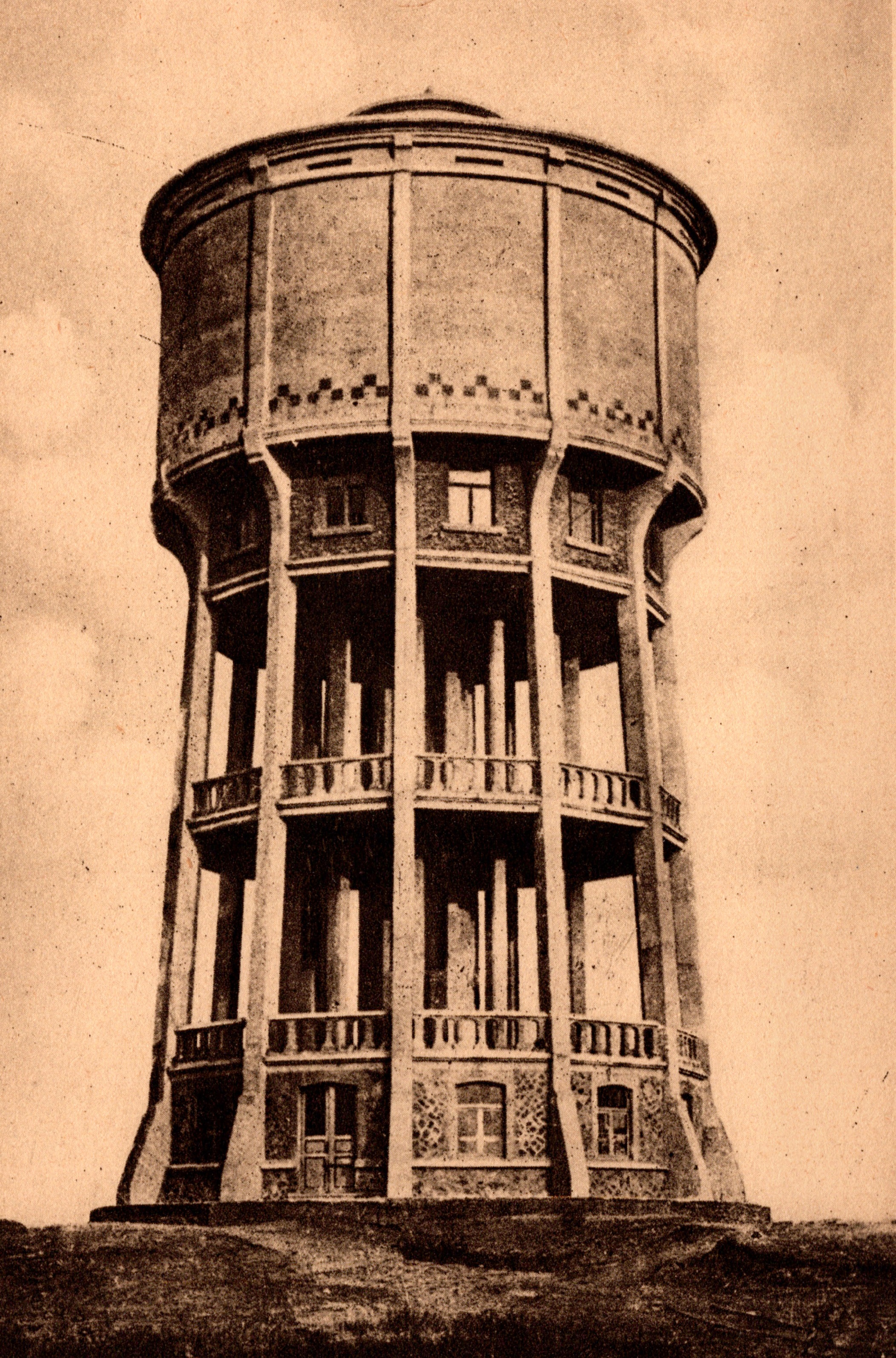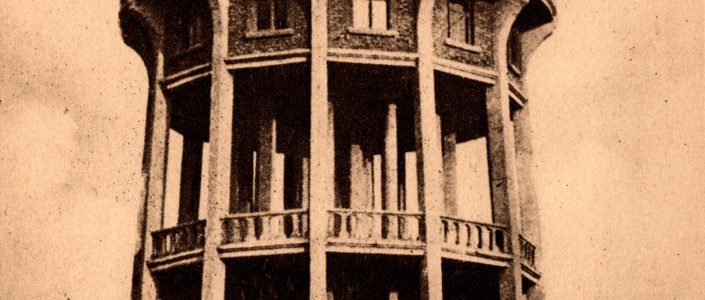What is good or even perfect is often accepted as normal and natural. So it is with us ‘Kamps’ (= from Leopoldsburg) tap water : perfect and ‘home made’.
As we head towards Hechtel and drive straight through the training area, who is looking then at the Water Tower on the right side? And yet our tap water comes from there. Clear pure water pumped from our own (although on Hechtels territory ) military domain.
Nobody that dived into the archives and sprained his brains to find the origin. And yet it took many twists before in our homes just a swing of the tap would let the precious water flow.
Nevertheless, worthwhile.
Camp Beverlo and the municipality Leopoldsburg got water, as was usual, from wells. But soon they found out that this water had to be boiled before using it in food.
When, around 1912, the infantry camp was extended once more and thus a greater number of troops had to be provided with water at the same time, the government was considering replacing the unsanitary wells with a water system.
Exploratory drilling proved that at 500m east of the camp, perfect drinking water was available at a very accessible depth. The construction of a water tower on hill 63 was proposed, but also outdated soon regarding the distance to the drill sites. At the outbreak of WW1 three wells were drilled and the shell of the water tower was finished up to the first floor.
After the truce, in November 1918, the works were resumed. The completion of the construction of the water tower was no problem.
However, the reuse of the three wells which were made before 1914 were unusable due to pollution, and an ammunition blast in the summer of 1919 and therefore had to be written off.
New drilling, more Eastward, showed new sources that both in quality and in quantity exceeded the previous. The water collection and distribution was provided and carried out as follows:
|
 |
Consumption peaks up to 150m³ per hour were anticipated. To this end, there would be a need to pump for 16 hours a day. The entire water collection system consists of three groups of each ten wells, approximately 100 meters apart, and each group in a different direction. There is a possibility provided for the construction of a fourth group. The wells are connected with each other. The three groups come together in a central collector.
The devices that are necessary to drive the water from the collector to the water tower have been drawn up in a building in the immediate vicinity of the collector. We know this as the “pompage” left along the Hechtelsesteenweg.
The water tower has a total height of 32m and a maximum diameter of 16m.
The total cost of the work after World War I exceeded 4 million Belgian francs (this figure was calculated in 1924).
The magnitude of these expenditures other necessary works in the Cavalry Camp were postponed.
Source: “Exposé succinet des circonstances qui ont amené à la création de la distribution d’eau au Camp de Beverlo.” by FAYT, Director of the B.C.M. 1924.
Jos Vermeulen
Local History Society Leopoldsburg association.
(Geschied- en Heemkundige Kring Leopoldsburg vzw.)
Translation by Patrick Marquenie
This article is also available in
![]() Nederlands
Nederlands

